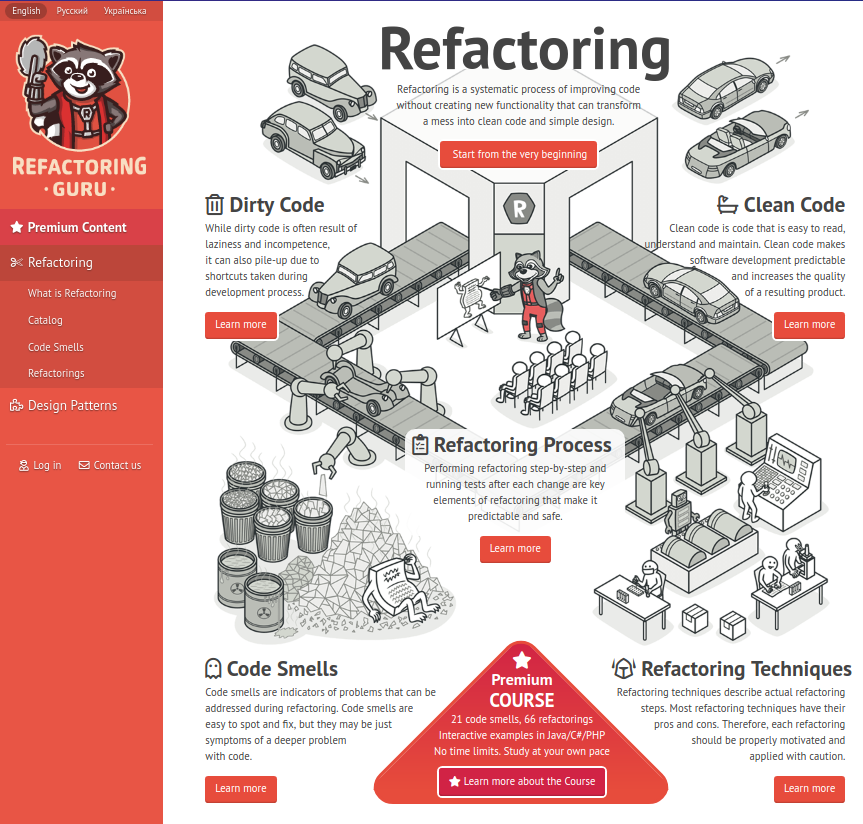
Refactoring.Guru is a great resource for learning about refactoring best practices and design patterns. A lot of the website’s content is also available as Dive into Design Patterns ebook.
Today I came across this GitHub repository, which makes this resource even better specifically for PHP developers. Yup, that’s right, the GitHub repository features all code examples written in PHP 7.3, making it super easy to jump into coding.
And if you aren’t a PHP developer, have a look at the other repositories, which do the same for a few other programming languages.
